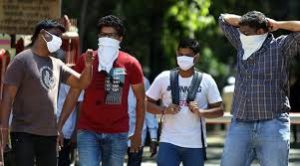
In a major change to criteria governing coronavirus hotspot classification, the government will now label a district “green”, or virus-free, if no new cases are reported in a 21-day period. Previously an infection-free period of 28 days was required to re-classify a district from “red”, or an area with over 15 COVID-19 cases, to “green”, an area with no new cases.
The change in criteria was disclosed in a letter from the Union Health Ministry to chief secretaries of all states and union territories, in which the government said the number of “red zones” had fallen from 170 to 130 (or around 23 per cent) between April 15 and April 30.
In that same period, however, the number of “green zones” also decreased – from 356 to 319 – indicating the virus is spreading, albeit with reduced intensity, to previously unaffected areas.
All eight metro cities, including national capital Delhi, are in “red zones”, with Mumbai and Delhi accounting for over 10,000 cases between them. Five states, including Delhi, have at least 10 “red zones” each, with Uttar Pradesh (19) and Maharashtra (14), recording the most.
By contrast northeast India has among the most “green zones” of any region, with Assam (30) and Arunachal Pradesh (25) recording the most.
Leave a Reply